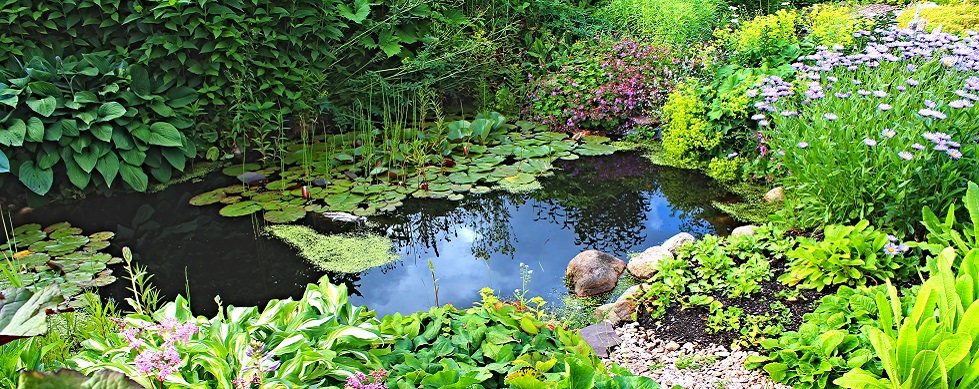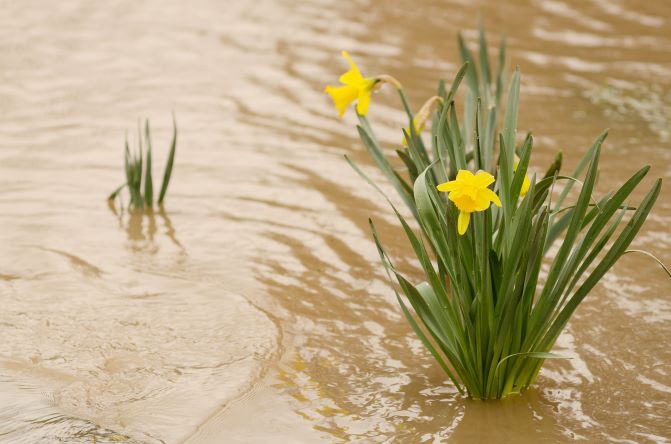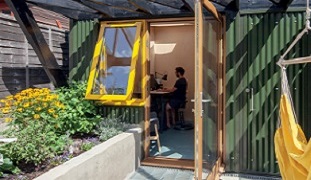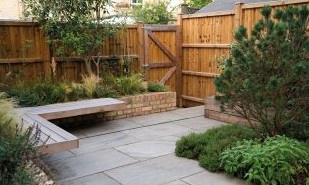
Increasing business by improving sustainability
Reducing your carbon footprint in gardens
For today’s newsreaders, there are two words that seem to keep cropping up on their auto-cue: climate change. For businesses, there’s another two: sustainability credentials. As both things are in many ways connected, the more companies that prioritise sustainability, the more chance those newsreaders will get to talk about something else.
Not only that, as customers and potential homeowners become increasingly interested in home and garden design that embrace concepts like carbon neutrality and net-zero carbon emissions, gardening, landscaping, and construction firms that demonstrate their understanding of these issues – and show an ability to put them into practice – stand to benefit.
In this article, we’ll take a closer look at a few of the techniques and ideas that can add significant carbon-reducing features to your landscaping and building projects – and allow you to demonstrate that you take sustainability seriously.

The new building material – plants
Our summers are getting noticeably hotter. Heatwaves stay that little bit longer and feel a lot clammier. Homeowners are asking more questions about improving ventilation or even investing in air-conditioning. Keeping the house cool in a sustainable way, however, has to be the ultimate goal.
A recent study by the RHS and Reading University has found that this can be achieved with ivy. While it’s no aircon, it’s the most natural and effective plant cover for cooling buildings – stopping walls from warming up and releasing heat in the night. Not only does ivy provide summer cooling, but it also can reduce humidity on warmer winter days – comprehensively busting the myth that climbing plants increase damp.
At their most simple, ‘living walls’ can be a planting of wall shrubs and climbers. This is referred to as ‘direct greening’ which according to RHS is “a system where a self-attaching climber utilises the substrate of a façade for support and, sometimes, nutrition.” At the more sophisticated end of the spectrum are engineered, planting systems. These often consist of modules fixed against a wall that contain soil or media for the plants to grow in. Whichever way you plant them, living walls benefit buildings in more ways than just making them look beautiful.

Manage water, mitigate climate change
We love to complain about the rain here in the UK, but it does have its advantages. Rainwater recycling and storage of rainfall can all help towards mitigating climate change and reducing carbon. Mains water has to be pumped over long distances and is heavily treated to make it drinkable. Rainwater harvesting means less use of mains water, so reduces the environmental impact whilst also saving on bills for those on water meters.
In addition, harvesting and storage of rainfall also reduces the risk of local flooding, something that may be worth pointing out when making that planning application. However, anything that slows down the runoff water coming from roofs is a bonus. As we’ve argued before, concreted surfaces mean that rainwater flows directly from properties and driveways into sewers. It then mixes with other pollutants before it reaches rivers or the sea, instead of gradually soaking into the ground, naturally.
That’s why something like drainage channels around a property can provide more than just a pretty façade. While primarily there to help keep walls dry, channelling allows you to direct runoff water where it can be useful. Into an underground rainwater harvesting tank, perhaps, or more creatively, to provide the necessary water for a raingarden. Sometimes known as bioretention facilities, a raingarden takes the idea of a soakaway and turns it into a beautifully planted, biodiverse garden feature.
Recently, though, one of the most innovative ways to manage runoff is through the installation of blue/green roofs. Green roofs – those planted with vegetation – hold a certain amount of rain before it’s released. Blue roofs go that bit further by holding large quantities of water, some allowing for it to be harvested. But both systems insulate the building below extremely efficiently.
It’s another area where ACO have been helping you build more sustainability into projects. Our patented Blue/Green Roof System complies with Building Standards and Regulations by ensuring the flat roofs can drain quickly in extreme events and slowly in normal use. The ACO system has managed to overcome the design challenges associated with blue/green roofs and brings the added benefits of UHI (urban heat island effect) mitigation, the chance to save energy through improved insulation, and flood control. On top of this, local planning guidance (especially The London Plan) is increasingly recommending the installation of blue/green roofs where possible.
Forgo fences for hedges
Everybody needs boundaries, and the quickest way to create one is to put up a fence. But as you know all too well, fences are flawed. They require timber to create, they need chemicals to preserve them, and if we’re talking panel fencing, it doesn’t take much of a storm to blow them down. Hedges on the other hand, bring all sorts of advantages. They create a natural privacy barrier, capture carbon, absorb pollution and noise, and slow down rainwater runoff.
Although it might take time to reap these rewards from a hedge, they can grow a lot faster than you might think. The speediest species of them all is bamboo - growing 60cm+ a year. Other fast-growing alternatives are Dogwood, Berberis ottawensis, Golden Privet or Oleaster 'Limelight'. For instant screening and 365-day cover, look no further than Cherry Laurel, Portuguese Laurel, Western Red Cedar, Privet and Lonicera nitida.
Hedges are also a habitat for wildlife and so increase biodiversity. The plants attract a variety of British fauna as the thick foliage provides a perfect home, especially in winter. And if your customers are really serious about attracting wildlife, there are a number of creature-friendly products to help.
Hedges can also come with an unexpected bonus. For anyone out in the garden who suddenly feels peckish, fruit-bearing species such as Elder, Crab Apple, Wild Cherry, Blackthorn, and Hawthorn all yield juicy produce, suitable for human consumption.
Many of these species are hardy and will develop in inland and coastal locations, difficult soils, and shaded areas. Fast-growing hedges can even be used in exposed sites and will tolerate strong winds and salt-laden air.

The drive for electric cars
Obviously, one of the most significant contributions to reducing an individual’s carbon footprint is to drive an electric vehicle. Making provisions for charging the car is often quite straightforward in rural areas where homes have room to accommodate it.
But in urban areas, things get trickier. At ACO, we’ve previously talked about the need for using permeable rather than non-permeable surfaces if your customers are considering paving over a front-garden. In fact, for areas more than 5m2, this is now a planning requirement*.
ACO’s GroundGuard and GravelGuard are the perfect solutions to creating space for electric vehicles. Both offer an unimpeded flow for surface water, as well as a robust and smart-looking surface for driveways or parking areas. GravelGuard also offers an eco option, made from recycled plastic.
If there’s provision being made in a project for an electric vehicle, why not consider incorporating outdoor electrical sockets in other places, too. The car isn’t the only thing that might need power – using electric mowers, hedge trimmers and strimmers is far better for the environment than their petrol-powered counterparts.
The mother of innovation
As customer-demand for green solutions and pressure to prove your sustainability credentials continues, any small way to reduce carbon emissions or mitigate climate change is worth looking into. As innovation continues, the answers will no doubt get smarter and be tech focused, but as we’ve seen above, sometimes the best answers lie right there with Mother Nature.
If you have any recent garden design or landscaping projects that have involved sustainable solutions, then we’d love to hear from you.


